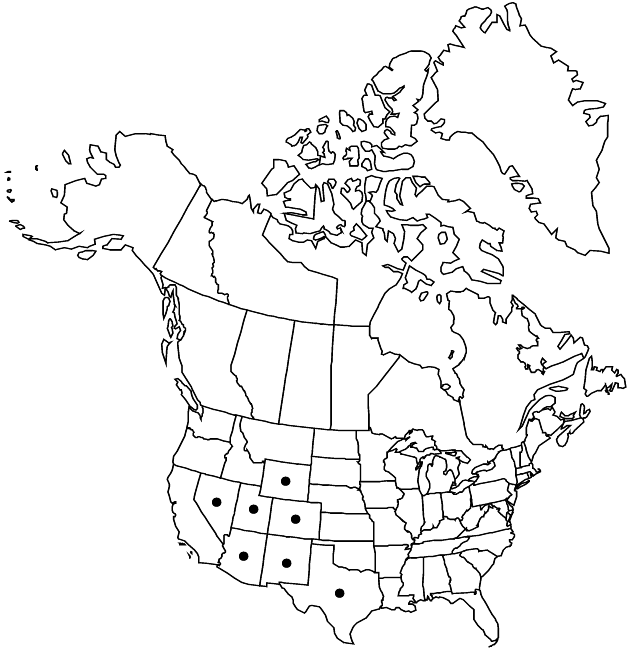Difference between revisions of "Hieracium fendleri"
Bonplandia (Hanover) 9: 173. 1861.
FNA>Volume Importer |
FNA>Volume Importer |
||
| Line 10: | Line 10: | ||
|name=Crepis ambigua | |name=Crepis ambigua | ||
|authority=A. Gray | |authority=A. Gray | ||
| + | |rank=species | ||
|publication_title=Mem. Amer. Acad. Arts, n. s. | |publication_title=Mem. Amer. Acad. Arts, n. s. | ||
|publication_place=4: 114. 1849, | |publication_place=4: 114. 1849, | ||
| Line 16: | Line 17: | ||
|name=Chlorocrepis fendleri | |name=Chlorocrepis fendleri | ||
|authority=(Schultz-Bipontinus) W. A. Weber | |authority=(Schultz-Bipontinus) W. A. Weber | ||
| + | |rank=species | ||
}} {{Treatment/ID/Synonym | }} {{Treatment/ID/Synonym | ||
|name=H. fendleri var. discolor | |name=H. fendleri var. discolor | ||
|authority=A. Gray | |authority=A. Gray | ||
| + | |rank=variety | ||
}} | }} | ||
|hierarchy=Asteraceae;Asteraceae tribe Cichorieae;Hieracium;Hieracium fendleri | |hierarchy=Asteraceae;Asteraceae tribe Cichorieae;Hieracium;Hieracium fendleri | ||
| Line 42: | Line 45: | ||
-->{{#Taxon: | -->{{#Taxon: | ||
name=Hieracium fendleri | name=Hieracium fendleri | ||
| − | |||
|authority=Schultz-Bipontinus | |authority=Schultz-Bipontinus | ||
|rank=species | |rank=species | ||
| Line 57: | Line 59: | ||
|publication year=1861 | |publication year=1861 | ||
|special status= | |special status= | ||
| − | |source xml=https://jpend@bitbucket.org/aafc-mbb/fna-data-curation.git/src/ | + | |source xml=https://jpend@bitbucket.org/aafc-mbb/fna-data-curation.git/src/eaa6e58056e40c9ef614d8f47aea294977a1a5e9/coarse_grained_fna_xml/V19-20-21/V19_398.xml |
|tribe=Asteraceae tribe Cichorieae | |tribe=Asteraceae tribe Cichorieae | ||
|genus=Hieracium | |genus=Hieracium | ||
Revision as of 19:19, 16 December 2019
Plants 8–30(–40+) cm (herbage often glaucous). Stems proximally piloso-hirsute (hairs 2–5+ mm), distally usually ± piloso-hirsute (hairs 1–3+ mm) and stellate-pubescent, sometimes stipitate-glandular as well. Leaves: basal 3–8+, cauline 0–1(–3); blades elliptic or oval to oblanceolate to lanceolate, 20–70 × 12–25(–40) mm, lengths 1.5–6+ times widths, bases cuneate, margins entire or denticulate, apices rounded to acute, faces piloso-hirsute (hairs 1–3+ mm). Heads 2–5+ in ± corymbiform arrays. Peduncles usually stellate-pubescent, sometimes piloso-hirsute and/or stipitate-glandular as well. Calyculi: bractlets 5—8+. Involucres cylindric to campanulate, (10–)12–15+ mm. Phyllaries 13–16+, apices ± acuminate, abaxial faces usually piloso-hirsute and stellate-pubescent, sometimes stipitate-glandular as well. Florets 15–30+; corollas pale yellow to ochroleucous, 7–13+ mm. Cypselae urceolate, 5–7 mm; pappi of 50–60+, ± stramineous bristles in 2+ series, 5–8+ mm.
Phenology: Flowering (May–)Jun–Aug(–Sep).
Habitat: Pine woods, near springs
Elevation: 1400–2900 m
Distribution

Ariz., Colo., Nev., N.Mex., Tex., Utah, Wyo., Mexico, Central America (Guatemala).
Discussion
Selected References
None.